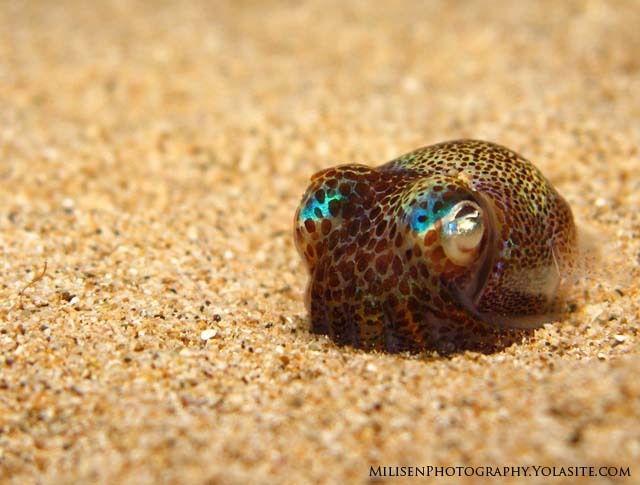The squid is a “sit and wait” predator, burying itself in the sand with its eight suckered arms and two tentacles to wait for prey to pass by. They then strike with their tentacles to capture their prey. If they happen to miss their target, the animal will bury itself back in the sand to wait for the next opportunity.1 Their primary diet is typically smaller shrimp and crustaceans.
They hunt from dusk until dawn, when they are usually most active. When not hunting, the Hawaiian bobtail squid will bury itself in the sand to hide from predators. They also have a small squid sac through which they can release a small amount of ink to try and distract the predator. Some known predators of the Hawaiian bobtail squid are the Hawaiian monk seal and the lizardfish.2
The Hawaiian bobtail squid has a bioluminescent light organ inside their mantle cavity, which provides light enough for the squid to hunt at night.1 The organ functions with the help of a symbiotic bacteria known as Vibrio fischeri, and the light is a result of the interaction between the bacteria and the squid’s bioluminescent organ in the squid’s mantle cavity.2
https://oceana.org/marine-life/hawaiian-bobtail-squid/


GOOD post
Octopost